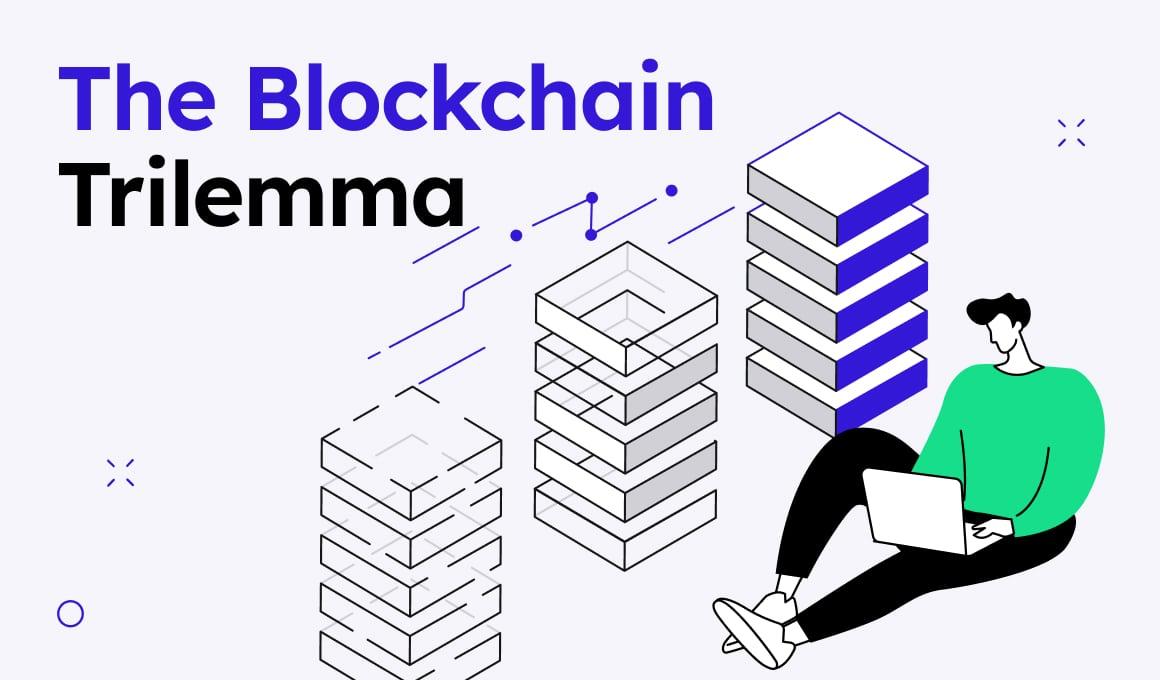The “Blockchain Trilemma” lies at the heart of some of the most crucial decisions and challenges faced by blockchain developers. It is, still, the unsolvable problem, which stands in the way of creating a near-perfect blockchain – one that is resistant to manipulation, hackers, and congestion.
Let’s see what the Trilemma is all about, and what can be done about it.
What is the Blockchain Trilemma?
The Blockchain Trilemma represents a delicate balancing act among three fundamental factors that every blockchain network strives to optimize: Decentralization, Security, and Scalability. The challenge is that these three factors often have an inverse relationship, meaning that as one improves, the others may suffer. Achieving an ideal balance among them is the ultimate goal.
1. Decentralization
Decentralization refers to the distribution of control and decision-making power across a network. It’s the essence of what makes blockchain technology unique. A decentralized network is resistant to censorship, tampering, and single points of failure, as no single entity holds too much power.
2. Security
Security involves safeguarding the network against malicious attacks, fraud, and unauthorized access. In a blockchain context, security often revolves around cryptographic techniques that ensure data integrity, immutability, and protection against double-spending. The more secure a blockchain, the more trust it can command from users.
3. Scalability
Scalability concerns the network’s ability to handle an increasing number of transactions without sacrificing speed and efficiency. As more users join a blockchain network, it should be able to process transactions without creating bottlenecks or causing delays. Scalability is vital for mainstream adoption, as it determines how practical a blockchain is for everyday use.
The Trilemma’s Delicate Balance
Here’s the catch: as you enhance one of these factors, the others can be affected negatively. For example, increasing scalability might require compromises in decentralization or security. Similarly, prioritizing security could impact scalability due to the computational resources needed for robust cryptographic mechanisms.
Solving the trilemma would mean the creation of a near-perfect blockchain, which would be independent, impenetrable, and highly productive – a self-regulating system that is not prone to risks, manipulation, and blackouts. That’s the vision.
But for now, the trilemma stands.
An Example
Bitcoin, for example, prioritizes decentralization and security, which has led to some scalability challenges. Transactions can take time to confirm, and the network’s throughput is limited.
Ethereum, on the other hand, is aiming to strike a balance by incorporating improvements like Ethereum 2.0, which was supposed to increase scalability without compromising on security and decentralization. However, Ethereum is still somewhat lacking in terms of scalability, with a peak transactions-per-second (TPS) throughput of 56/s, but normally around 24 TPS.
This only goes to show that, while getting nearer, we are not there yet.
This is where alternative solutions to the trilemma come into play, especially in terms of scalability.
Resolutions and Proposed Solutions to the Blockchain Trilemma
- Layer-2 Scaling Solutions: These solutions build on top of the main blockchain and handle a large number of transactions off-chain, alleviating congestion and boosting scalability while maintaining security and decentralization.
- Sharding: Sharding involves breaking down the blockchain into smaller parts called shards, allowing each shard to process transactions independently. This can significantly increase throughput while preserving the core principles of decentralization and security.
- Consensus Algorithm Upgrades: Innovations like Proof of Stake (PoS) and Delegated Proof of Stake (DPoS) aim to reduce energy consumption and increase scalability compared to traditional Proof of Work (PoW) algorithms while maintaining security.
- Off-Chain Solutions: Certain transactions can occur off-chain, only settling on the main blockchain when necessary. This reduces the strain on the main network while still benefiting from blockchain’s security and decentralization.
Final Thoughts
The Blockchain Trilemma presents challenges, but, like any good challenge, also drives innovation. Solutions are being actively researched and implemented to strike the right balance among decentralization, security, and scalability. As the technology continues to evolve, the resolution of the trilemma will shape the future of blockchain applications. Only time will tell how and when it will happen, and who will be the one to make it.






